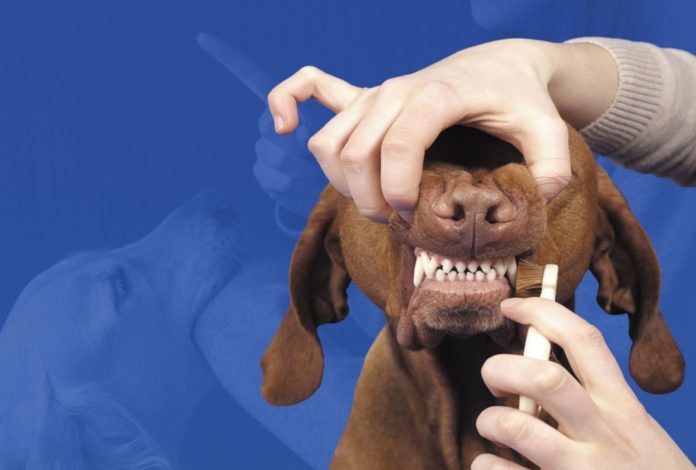Throughout my veterinary career there have been months when one problem appears again and again in my patients. Recently, I have seen one case after another of puppies with malocclusions or teeth coming in incorrectly causing developmental problems. Also, many of these cases have been in dog breeds such as Labrador retrievers and beagles that typically have normal bites. A normal bite is when the bottom and upper teeth of the carnivore interlock properly and the mouth can be opened and closed without the teeth striking each other or being stuck in the soft tissue of the mouth. There are many types of veterinary pediatric dental issues these are just two of the most common.
Every puppy and kitten should have the mouth looked at as part of its routine examination during vaccinations and other procedures. Problems are much more frequently seen in puppies. Facial changes are less exaggerated in cats; therefore, problems are infrequent. A carnivore’s teeth interlock from the big canines or fangs back through the premolars and molars. This is to allow them to bring down prey and tear into bone and muscle. Like us, carnivores have baby teeth or deciduous teeth that fall out and are replaced by permanent teeth. This ends in our pets by about six months of age. When we look at the dental arch we want to see the bones of the upper and lower jaws growing in unison as the pet grows and the face and jaw elongate without impediment by teeth locked in tissue or hitting each other.
The most common problem in dogs is the big canines, the fangs, sometimes are directed too far inward towards the middle and the canines from the bottom grow into soft tissue of the mouth at the top and this stops the lower jaw from growing properly. This occurs in domestic dogs because we have bred them to exaggerate certain traits, to get the appearance we seek in a particular breed, or sometimes it’s just bad luck. When this happens, we recommend immediate removal of the baby teeth so the puppy’s lower jaw can grow properly. Sometimes in mild cases we might ask to repeatedly see the young puppy so we can monitor whether interference is necessary. I love to speculate what a human orthodontist might do when faced with children with big fangs that will mature in six months.
Sometimes the puppy’s baby teeth looked perfect but the adult teeth start to emerge in an abnormal position, usually inside the baby teeth, again necessitating early removal of baby teeth to open the normal pathway for the permanent teeth in the growing puppy. In the most extreme cases we are unable to correct the bite or the window of opportunity was missed and, yes, veterinarians refer dogs for root canals and crowns to specialists.
We see puppies with missing teeth, malformed teeth, teeth with extra crowns, teeth coming in at wrong angles, and extra teeth. Decisions are made based on whether we need to take advantage of the growing the pet will still do and the long-term risks to the pet going forward. Veterinary dentistry has come a long way in the thirty years I have been a veterinarian. We use equipment comparable to that used by your own dentist and take radiographs or x-rays to guide our decisions. We have specialists to refer to if the equipment and skills required are beyond those of us in regular practice. Just like with our own health and that of our children, your pet’s health is intertwined with their dental health in the long haul. Make sure your puppy and kitten has its mouth checked in its early check-ups.









